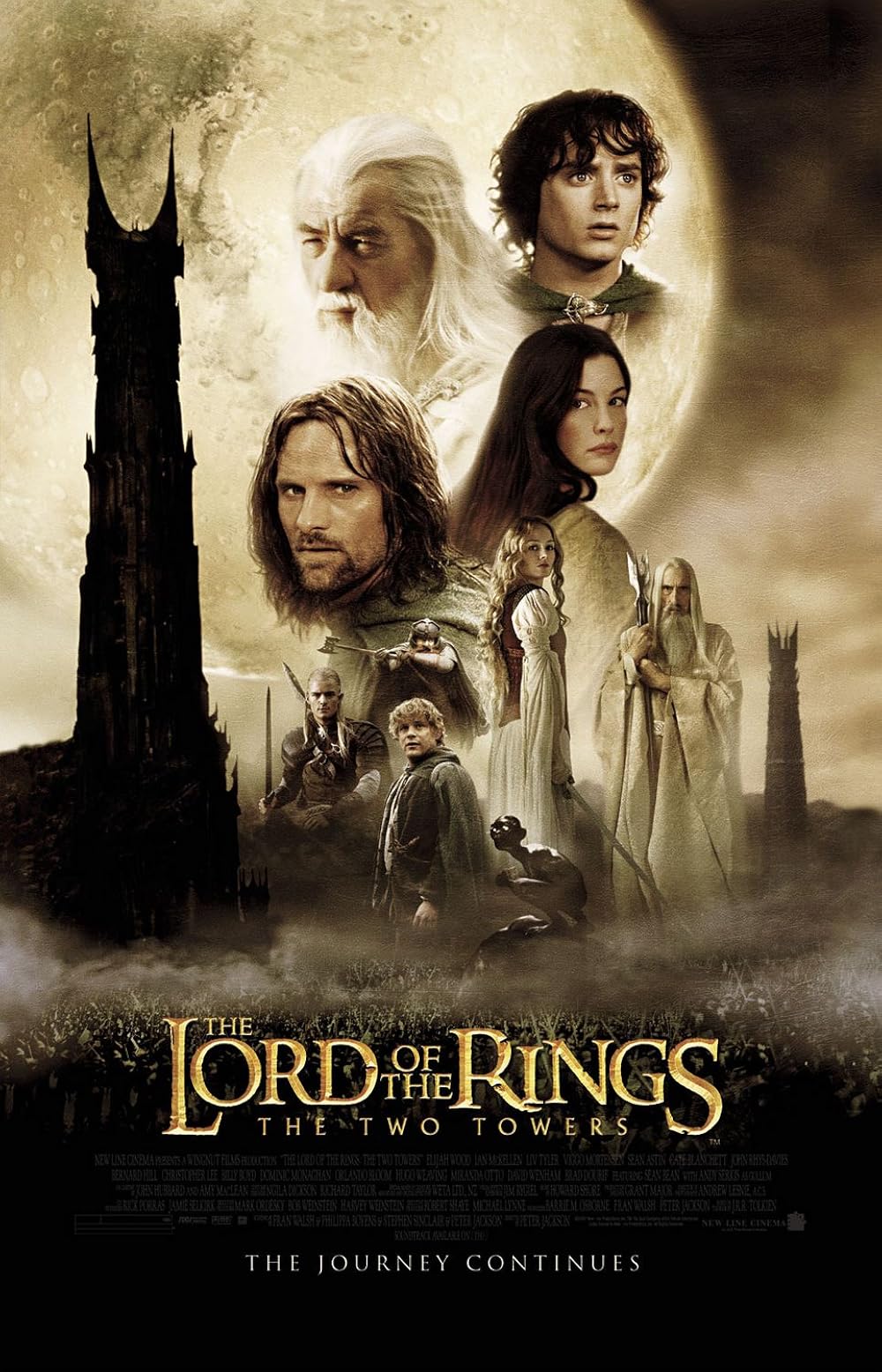Historical Development
Fantasy films have evolved significantly from early adaptations to modern blockbusters. Early films often relied on simple special effects and storytelling, while contemporary fantasy films use advanced CGI and complex narratives. Early films like The Wizard of Oz (1939) laid the groundwork for the genre (Fowkes, 2010). Modern blockbusters such as The Lord of the Rings (2001-2003) trilogy, directed by Peter Jackson, and the Dune (2021, 2024) series, directed by Denis Villeneuve, have set new standards for fantasy filmmaking with their innovative use of technology and expansive world-building (Walters, 2011).


Key Films and Directors
 Peter Jackson's adaptation of J.R.R. Tolkien's The Lord of the Rings (1954-1955) is celebrated for its meticulous attention to detail, faithful adaptation, and groundbreaking special effects (Walters, 2011). The trilogy's success is attributed to its comprehensive world-building, which includes detailed settings, languages, and histories that bring Middle-earth to life. Jackson's direction and the use of innovative technology like CGI and motion capture were pivotal in creating the immersive experience (Walters, 2011). Jackson's work on the series has been critically acclaimed and has set a benchmark for future fantasy films.
Peter Jackson's adaptation of J.R.R. Tolkien's The Lord of the Rings (1954-1955) is celebrated for its meticulous attention to detail, faithful adaptation, and groundbreaking special effects (Walters, 2011). The trilogy's success is attributed to its comprehensive world-building, which includes detailed settings, languages, and histories that bring Middle-earth to life. Jackson's direction and the use of innovative technology like CGI and motion capture were pivotal in creating the immersive experience (Walters, 2011). Jackson's work on the series has been critically acclaimed and has set a benchmark for future fantasy films.
 The Harry Potter (2001-2016) film series, based on J.K. Rowling’s novels, spans eight films directed by four notable directors, Christopher Columbus, Alfonso Cuarón, Mike Newell, and David Yates (Nel, 2008). Each director brought their unique style while maintaining continuity in the overarching narrative. The series is renowned for its rich world-building, featuring the magical school of Hogwarts, detailed magical lore, and a wide array of characters and creatures (Nel, 2008). The series' success is also due to the careful balance of character development and special effects. The Harry Potter series has significantly influenced the fantasy genre in film, demonstrating the importance of consistent world-building across multiple directors and installments.
The Harry Potter (2001-2016) film series, based on J.K. Rowling’s novels, spans eight films directed by four notable directors, Christopher Columbus, Alfonso Cuarón, Mike Newell, and David Yates (Nel, 2008). Each director brought their unique style while maintaining continuity in the overarching narrative. The series is renowned for its rich world-building, featuring the magical school of Hogwarts, detailed magical lore, and a wide array of characters and creatures (Nel, 2008). The series' success is also due to the careful balance of character development and special effects. The Harry Potter series has significantly influenced the fantasy genre in film, demonstrating the importance of consistent world-building across multiple directors and installments.
 Pan's Labyrinth (2006) is a dark fantasy film that intertwines historical and fantastical elements. Directed by Guillermo del Toro, it is set in post-Civil War Spain and follows a young girl who discovers a mythical labyrinth (DePaoli, 2012). Del Toro's film is noted for its imaginative creature design, symbolic storytelling, and the seamless integration of fantasy elements with real-world settings (DePaoli, 2012). The film's visual style and narrative depth have earned it critical acclaim. Del Toro's work highlights the potential of fantasy films to explore complex themes and create visually stunning, immersive worlds.
Pan's Labyrinth (2006) is a dark fantasy film that intertwines historical and fantastical elements. Directed by Guillermo del Toro, it is set in post-Civil War Spain and follows a young girl who discovers a mythical labyrinth (DePaoli, 2012). Del Toro's film is noted for its imaginative creature design, symbolic storytelling, and the seamless integration of fantasy elements with real-world settings (DePaoli, 2012). The film's visual style and narrative depth have earned it critical acclaim. Del Toro's work highlights the potential of fantasy films to explore complex themes and create visually stunning, immersive worlds.
Techniques for World-Building in Fantasy Films
Visual and Special Effects
Advanced visual and special effects are crucial for creating believable fantasy worlds. Techniques such as CGI, motion capture, and practical effects help bring fantastical elements to life on screen (Zaidi, 2019). The Avatar (2009, 2022) series by James Cameron uses cutting-edge CGI to create the lush, alien world of Pandora. Similarly, the detailed CGI and practical effects in The Lord of the Rings (2001-2003) contribute to the realism of Middle-earth. Effective use of visual and special effects enhances the immersive quality of fantasy films, making them more engaging for audiences (Zaidi, 2019).
Production Design
Production design involves the creation of sets, props, and costumes that reflect the unique characteristics of the fantasy world. This aspect of filmmaking is essential for establishing the film's visual identity and believability (Zaidi, 2019). The intricate set designs and detailed props in The Lord of the Rings (2001-2003) and Harry Potter (2001-2016) films are crucial for creating their respective worlds. From Hogwarts' castle to the Shire, each location is meticulously crafted to enhance the story (Zaidi, 2019). Production design plays a vital role in fantasy films, providing the tangible elements that help viewers suspend disbelief and fully engage with the story.
Narrative and World-Building Integration
Integrating narrative with world-building involves developing a story that naturally reveals the intricacies of the fantasy world. This includes using characters, plot, and dialogue to explore the world's rules, history, and culture (Zaidi, 2019). In Blade Runner (1982, 2017), the narrative is intertwined with the world-building, revealing the dystopian future through the story's progression. Similarly, in Pan's Labyrinth (2006), the mythical elements are gradually uncovered through the protagonist's journey. A well-integrated narrative and world-building approach ensures that the fantasy world feels lived-in and coherent, enhancing the overall storytelling (Zaidi, 2019).
